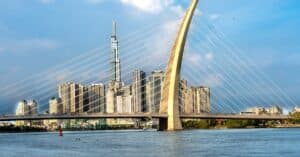“`html
Welcome to our inspiring digital space.
Your experience is at the heart of our concerns.
Discover how we value every interaction. To ensure smooth navigation, we use cookies and data to provide and maintain our services. We monitor interruptions and protect against spam, fraud, and abuse to ensure a secure environment. Analyzing audience engagement allows us to understand the use of our services and improve their quality. By choosing to “Accept all,” you help us develop new services and measure the effectiveness of advertisements. You can also opt for personalized content and ads based on your preferences and browsing history.

Table des matières
ToggleUnderstanding the ‘silver economy’
The silver economy represents a rapidly expanding economic sector, focused on the needs and desires of elderly people. In a world where life expectancy is increasing, this economy becomes an essential pillar to support an aging population. It encompasses a wide range of services and products, from healthcare to assistive technologies, including leisure and adapted tourism. In Hong Kong, the silver economy is seen as a major opportunity to stimulate economic growth while addressing the specific needs of a growing elderly population.
By focusing on this demographic niche, businesses can develop personalized offerings that enhance the quality of life for seniors while generating new revenue sources. For example, the real estate sector can adapt by creating accessible housing with suitable services, while the technology sector can innovate with smart devices that facilitate the daily lives of elderly individuals. This versatile approach not only meets a growing demand but also creates jobs and stimulates various segments of the local economy.
The demographic challenges of Hong Kong
Hong Kong faces significant demographic challenges, with an aging population that continues to grow. According to the latest statistics, the percentage of people aged over 65 is expected to increase substantially over the coming decades. This demographic evolution raises essential questions regarding the sustainability of health systems, pensions, and social infrastructures. The silver economy thus emerges as a strategic solution to address these challenges by stimulating inclusive and sustainable economic growth.
The increasing elderly population also leads to changes in consumption dynamics. The demand for healthcare, adapted leisure, and personalized services is multiplying, thereby creating a greater demand for specific products and services. Furthermore, this demographic evolution influences the labor market, requiring adjustments in recruitment and training policies to effectively integrate active seniors. By proactively addressing these challenges, Hong Kong can not only alleviate demographic pressures but also transform these challenges into economic opportunities.
Strategies adopted by Hong Kong to stimulate the ‘silver economy’
To energize the silver economy, Hong Kong has implemented a series of innovative and targeted strategies. One of the flagship initiatives is the development of financial support programs dedicated to innovative businesses in the senior services sector. These programs aim to encourage innovation and facilitate access to financing for startups and SMEs offering solutions tailored to the needs of elderly individuals.
Additionally, the Hong Kong government is investing heavily in health and wellness infrastructures, incorporating advanced technologies such as telemedicine and remote monitoring devices. These investments not only improve the quality of care but also make services more accessible and efficient. Furthermore, public-private partnerships are encouraged to develop sustainable and innovative solutions, thus stimulating collaboration among various economic players.
Another key strategy is the encouragement of continuous training and education for seniors, to maintain their employability and engagement in the job market. Specific training programs are set up to develop new skills aligned with the emerging needs of the silver economy. These initiatives aim to leverage the experience and expertise of seniors while providing them with opportunities for professional reintegration.
Finally, promoting tourism tailored for seniors is an essential component of this strategy. By developing specific tourism offers, Hong Kong attracts an elderly clientele seeking comfortable and enriching stays. These initiatives contribute not only to increasing seniors’ spending but also to energizing the local economy by attracting regular visitors and creating jobs in the tourism sector.
Key sectors of the ‘silver economy’ in Hong Kong
The silver economy in Hong Kong encompasses several key sectors that play a determining role in its dynamism and expansion. Among these sectors, the health sector occupies a prominent position, with a growing demand for specialized medical services and home care solutions. Technological advancements, such as connected health devices and telemedicine platforms, are revolutionizing the way care is delivered, thus offering a better quality of life for elderly people.
The real estate sector is also undergoing significant transformation, with the creation of housing tailored to the needs of seniors. These residences incorporate specific facilities, such as accessible elevators, adapted gyms, and community spaces that foster social connections. This approach addresses a growing demand while providing optimized living conditions for elderly individuals.
Moreover, the tourism sector plays a crucial role in the silver economy. By developing specific tourism offers, such as adapted excursions and concierge services, Hong Kong attracts a senior clientele seeking comfort and security. This specialization in tourism also diversifies revenue sources and stimulates the local economy through a regular increase in spending by elderly visitors.
Finally, the technology sector is an essential driver of the silver economy. Innovations in assistive technologies, health applications, and home automation solutions facilitate the daily lives of seniors and allow them to remain independent longer. These technologies not only improve the quality of life for elderly individuals but also create new business opportunities for local companies.
Expected economic impacts: a 5% increase
One of the major ambitions of Hong Kong in its strategy for the silver economy is to increase spending by seniors by 5% per year over the next three years. This significant increase is made possible by a combination of economic and demographic factors. By specifically targeting the needs and preferences of elderly individuals, Hong Kong manages to stimulate sustained demand across various key sectors.
Investments in health infrastructures and assistive technologies create a favorable environment for better quality of life, thus encouraging seniors to invest more in adapted services and products. Additionally, initiatives to promote adapted tourism contribute to attracting a senior clientele willing to spend more on enriching and comfortable experiences.
Training and vocational retraining programs also help maintain an active and engaged population, thereby increasing their purchasing power and capacity to consume. By promoting the economic inclusion of seniors, Hong Kong ensures a steady growth in spending within the silver economy, supported by coherent and effective public policies and private initiatives.
Moreover, the increase in seniors’ spending has positive repercussions on the entire local economy. It creates new business opportunities, stimulates innovation, and generates jobs in the rapidly growing sectors of health, tourism, and real estate. Thanks to these dynamics, Hong Kong is well on its way to achieving its economic goal while sustainably and inclusively meeting the needs of an aging population.
Success stories and future perspectives
Several initiatives in Hong Kong illustrate the success of the strategy aimed at energizing the silver economy. For example, the establishment of community centers dedicated to seniors, offering leisure activities, health services, and training programs, has strengthened social connections and improved the quality of life for elderly individuals. These centers are becoming reference models for other regions seeking to develop their own silver economy.
Another notable example is the development of innovative technologies for healthcare. Local startups have launched telemedicine applications and home health monitoring devices, facilitating access to care and enabling proactive management of chronic diseases. These technological innovations not only address seniors’ needs but also stimulate innovation and competitiveness in the local economy.
Furthermore, initiatives aimed at promoting adapted tourism have also yielded positive results. By offering personalized stays and tailored activities, Hong Kong attracts an international senior clientele, thus increasing tourism revenues and creating jobs in the sector. These initiatives demonstrate how a targeted and well-planned approach can lead to positive results for the local economy.
For the future, Hong Kong continues to explore new opportunities in the silver economy, focusing on innovation, collaboration, and sustainability. Pilot projects are underway to test new ideas and adapt strategies based on feedback and market developments. By staying at the forefront of trends and adapting to the changing needs of seniors, Hong Kong is well-positioned to maintain its economic growth and ensure a prosperous future for its aging population.
Strengthening the silver economy through in-depth exchange sessions
A key element of the success of the silver economy in Hong Kong lies in the in-depth exchange sessions between public and private players. These sessions facilitate knowledge sharing, discuss best practices, and coordinate efforts to maximize the impact of initiatives. By facilitating communication and collaboration, Hong Kong ensures a coherent and unified approach to developing the silver economy.
These exchanges have led to the creation of strategic partnerships and collaborative projects that effectively address the identified challenges and opportunities. For instance, technology companies work closely with health institutions to develop innovative solutions tailored to the specific needs of seniors. Likewise, joint training programs are established to better prepare professionals to serve this population.
Moreover, these exchange sessions promote the rapid adoption of innovations and the implementation of best practices, thereby accelerating the development of the silver economy. Through this collaborative approach, Hong Kong is able to quickly adapt to market changes and seize new opportunities while ensuring sustainable and inclusive growth of its economy.
In conclusion, strengthening the silver economy through in-depth exchanges and close collaboration constitutes an effective strategy to energize the silver economy in Hong Kong. By fostering innovation, collaboration, and sustainability, Hong Kong positions itself as a leader in this expanding sector, offering promising prospects for years to come.
Le salon # SilverExpo 🟦 : Jour 1️⃣ C’est parti !
— Silver Economy Expo (@SilverXpo) November 28, 2023
90 exposants vous attendent aujourd'hui à Paris Porte de Versailles !
Bon salon à tous !#SilverEco #Seniors #Innovations #Startups pic.twitter.com/QsiWiZo8He








